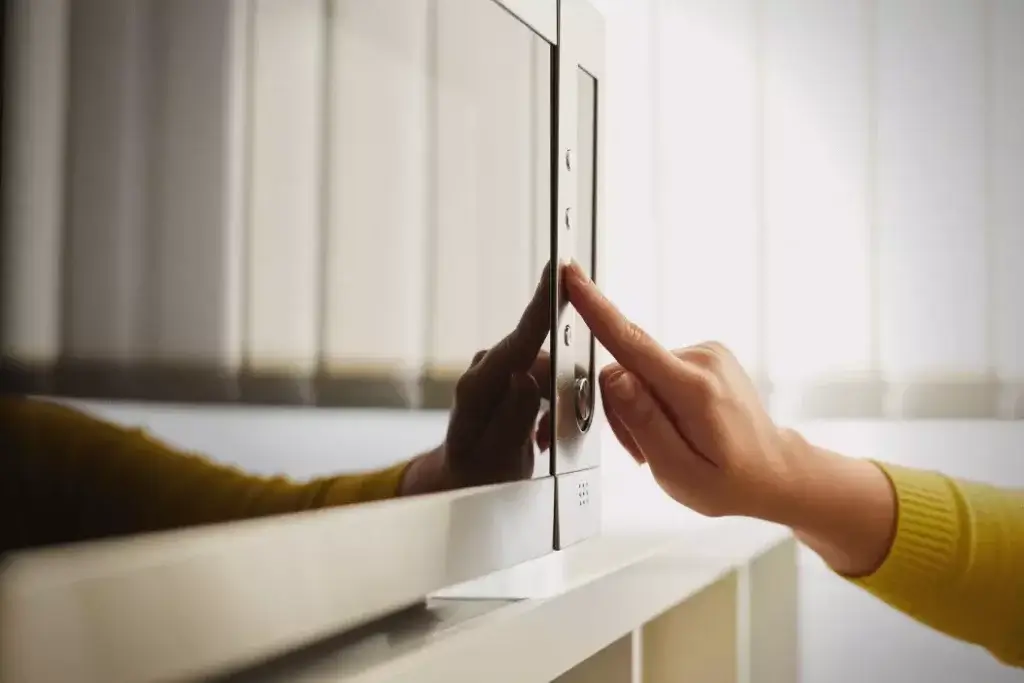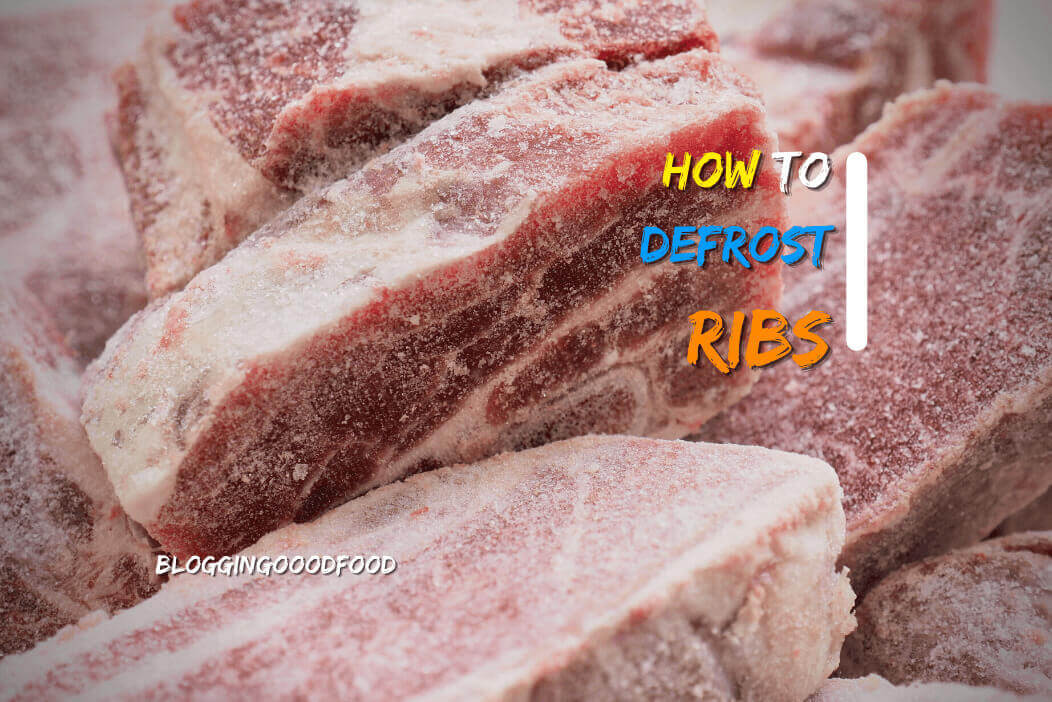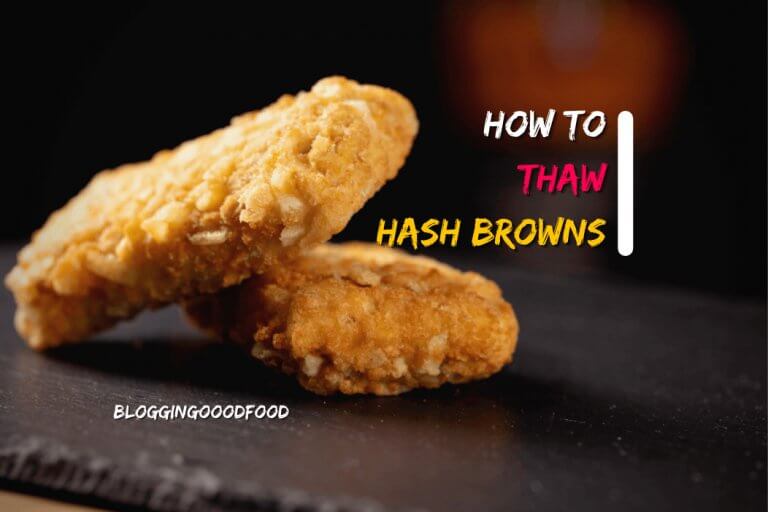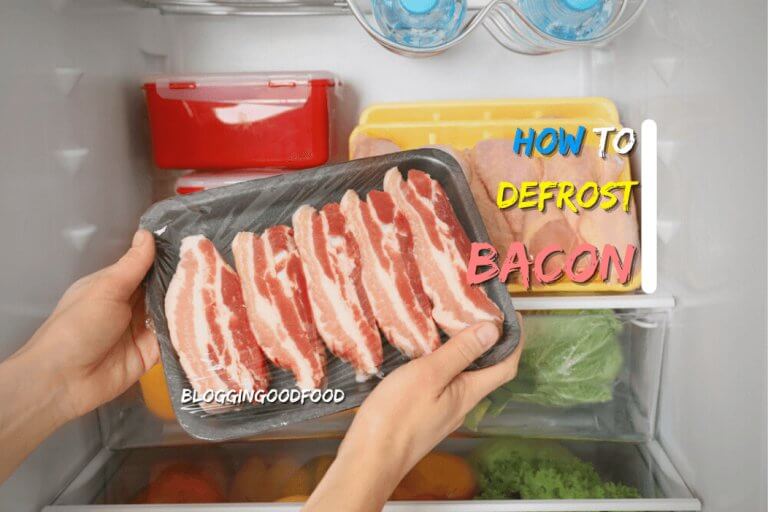Can you picture consuming a succulent slab of ribs that haven’t been thoroughly thawed first? It’s not feasible, to put it mildly. Defrosting is one of the most important pre-conditions that must be met before beginning the cooking process. The entire process of thawing appears to be somewhat complicated. Although, in practice, it isn’t all that difficult.
I’m going to discuss several different techniques for defrosting ribs in this particular post, so bear with me. In other instances, it might be beef or lamb. No matter what happens, the methods will always be the same regardless of the situation. If you can recognize the important anticipations, defrosting ribs will not be a difficult task for you.
Table of Contents
What Should You Use to Defrost Ribs?
If you have a lot of time on your hands, it is preferable to thaw the ribs in the refrigerator. You will only want a refrigerator; nothing more will be required.
For those who need to get things done quickly, I recommend thawing the meat in a microwave oven instead. It is the most suitable method available. When thawing using a microwave, only one piece of equipment is required: the microwave oven itself.
If you’re wondering how to thaw the ribs with the aid of water, you’ll need a lot of ingredients at the same time, so plan accordingly. Defrosting with water necessitates the use of water first and foremost. The water may be hot or chilly.
This procedure also necessitates the use of impermeable zip-bags to ensure that water does not enter the ribs. A broad bowl is required for the process in vessels, which is a need.
Is It Possible to Cook Ribs Without First Defrosting Them?
It is highly suggested that frozen meat be defrosted before cooking if feasible. You may, however, cook frozen or partly frozen ribs in the oven, on the stovetop, or over an open flame on the grill without first defrosting them; however, the cooking time will be roughly 50% longer. A steak thermometer should be used to determine when the meat is done.
Method 1: Defrosting in the Refrigerator

Plan ahead of time to defrost the ribs in the safest and most secure method possible. You should be aware that if you intend to cook the ribs on a Friday, you must begin thawing them on Thursday. According to the Food and Drug Administration of the United States, it might take up to a full day for the ribs to defrost properly.
Of course, you have to consider the temp of your refrigerator as well. For example, food would likely take longer to thaw when the temp is maintained at 35°F as opposed to 40°F; therefore, it may be a good idea to raise the temperature by a few degrees to compensate.
When you are preparing to defrost the ribs, it may be a good idea to put them in a jar so that any drippings will be captured when the ribs begin to thaw. This will prevent any drippings from contaminating the rest of the dish.
The raw juices included in the meat are likely to leak all over your refrigerator, so you must take the necessary precautions to keep this from happening. As previously stated, you should never defrost ribs at room temp due to the possibility of germs growing on them.
After thawing and defrosting in the refrigerator, ribs can be stored there for up to 3 to 5 days, depending on how long they’ve been frozen. It’s simple to refreeze the ribs if you change your mind and determine that you won’t be preparing them after all.
As previously stated, this cannot be accomplished by allowing the ribs to thaw at room temperature because, once the germs begin to grow, freezing the ribs is equivalent to delaying the inevitable. Please keep in mind, though, that freezing them in this manner would almost certainly result in a loss of quality.
Method 2: Defrosting in Microwave

In a rush and looking for a quick way to thaw ribs, utilize this approach. It takes around 15 minutes. Using this approach to defrost ribs will save you time that would otherwise be spent sitting for the ribs to defrost slowly before cooking them.
However, while this is the quickest way, it is also the most complex. You must adhere to several safety precautions to ensure the highest possible quality of the ribs.
After removing the ribs from the refrigerator, take all packing materials and wrap from the ribs, particularly plastic wraps, tags, and foamy wrapping, and discard. Most packaging is not heat resistant and includes chemicals that may melt into the ribs when microwaving is performed on it.
See if your microwave has a defrost function by looking at the characteristics of the appliance. If it does, put it in defrost mode and pick the sort of meat you’re thawing from the drop-down menu. If your microwave does not have this capability, turn the power down to 30 % and put your frozen ribs in a microwave-safe jar that is just loosely fitted over the top.
Based on the strength of the microwaves and the diameter of the ribs, defrosting in the microwave will take around 7 to 8 minutes per pound of ribs defrosted. The edges of the ribs may softly cook when defrosting, but the center of the ribs will remain frozen due to the thickness of the ribs.
To ensure that the heat is uniformly distributed to both sides of the ribs and the container’s interior, pause the thawing process halfway through and flip the container.
Specifically, this is done to prevent inconsistent defrosting, which can occur when the ribs reach 40 Fahrenheit, which is the temp at which germs can live and reproduce in food products.
According to the manufacturer, ribs defrosted in the microwave are no longer safe to refreeze and must be cooked quickly after defrosting.
Never put meat in the refrigerator after being microwaved in the microwave. You must cook the defrosted ribs as soon as they defrosted to avoid them becoming soggy. If you don’t, you might as well invite the microorganisms stated above to the gathering.
Method 3: Defrosting Under Cold Water

The process of thawing meat with cold water is not very time-consuming. However, if you intend to defrost the ribs in cold water, you must take special care to prevent the meat from becoming mushy. It takes only one hour to cook a pound of ribs to perfection.
When it comes to tiny quantities of meat, defrosting in cold water is preferable to boiling. This technique is well worth the time and effort for those who need to get things done fast.
Step 1: First and foremost, prepare a plastic container or an airtight zip-top bag for keeping the ribs after cooking.
Step 2: After putting the meat in a bag, fill a saucepan halfway with cold water and defrost the meat for up to 30 minutes or a little longer, depending on your preference.
Step 3: After completing the initial thawing, replace the vessel with some other clean, cold water batch to finish the process.
Step 4: Re-start the thawing procedure from the beginning. Thaw the meat until it is entirely thawed and ice has been removed.
That’s all there is to it. It’s also the most accessible and desirable method of completing the task. This procedure may be used to defrost any tiny quantity of ribs that have been frozen. This procedure is significantly more natural compared to melting in a freezer or microwave oven. Because it is natural, it is also significantly more healthful.
Precautions:
- When putting the meat in a zip-top bag, ensure the bag is completely airtight. If there is any leakage, avoid using the bag as much as possible. Otherwise, the ribs will be damaged by the water.
- Remember to replace the water once it has been thawed for the first 30 minutes.
- When the thawing process is complete, begin cooking the meat as soon as possible. Don’t let it be undercooked for an extended time.
Method 4: Defrosting Under Hot Water

The general public does not widely accept hot water to thaw meat. Nonetheless, it is one of the most effective ways available. It’s also extremely healthy since thawing meat with hot water destroys any harmful germs and bacteria that may be present in the ribs. It has also been scientifically shown. This immense force is possessed by boiling water.
Step 1: To begin, fill a pan or a dish halfway with water and set it aside. Don’t drink more than one liter of water.
Step 2: Heat the water until it becomes unbearably hot. When you notice the water is beginning to sputter, switch off the heat immediately.
Step 3: Place the portion of water in the pan of boiling water and cover it with hot water.
Step 4: It should be left on for roughly 10-15 minutes. The ribs will continue to cook at the same rate in the interim.
The procedure has come to an end. See, it’s really simple. This procedure may be completed by anyone with no difficulty at all. In addition, this method is considerably more convenient for first-time cooks because it requires less effort.
Precautions:
- Don’t let the water boil for an excessive amount of time.
- If at all feasible, try to replace the water at least once. If this is not done, the water may get polluted with harmful microorganisms.
- Make certain that the bag is completely airtight. If the bag is licked in any way, the meat will suffer horribly.
Frequently Asked Questions:
What is the best way to thaw meat overnight?
Preparing ahead of time is the most efficient method of defrosting meat safely and securely. Place it on a plate in the refrigerator overnight to allow it to thaw completely. You’ll be prepared to cook the following day. For safety reasons, meat should never be stored at room temperature for more than two hours.
How long should you keep ribs in the freezer once they’ve been thawed?
According to some experts, keeping the meat for more than two hours after the defrosting procedure has been completed is extremely detrimental to the flesh. If you want to take your time, it is entirely possible. You may store the beef in the freezer for roughly one hour at a time. Holding the ribs for an extended period may be detrimental to the long term.
Why don’t germs grow on ribs that have been frozen?
Bacteria are unable to grow at cold temperatures. It is instead at this time that they go into a dormant condition till the temperature changes to a higher temperature.
How long should ribs be defrosted in the freezer?
In the freezer, it takes more than one day to melt correctly. However, it is better to maintain the chunk at 35-40 hours to be on the safe side. Alternatively, you may leave it for 2-3 days to obtain an arbitrary outcome.
Bottom Line:
That’s all there is to it! Everything you need to know about defrosting ribs is right here. We hope you found this article to be informative and that you will be able to enjoy some wonderful, tender ribs shortly. Thank you for taking the time to read this!







